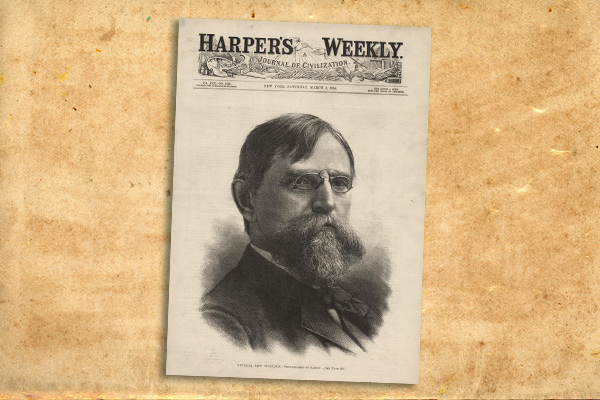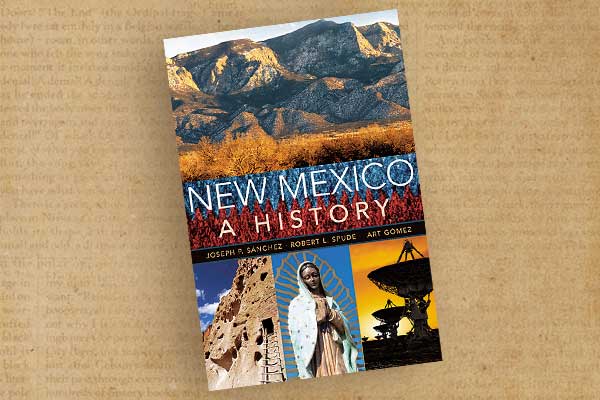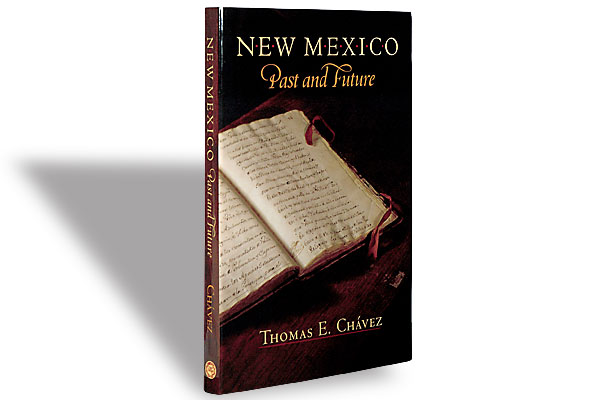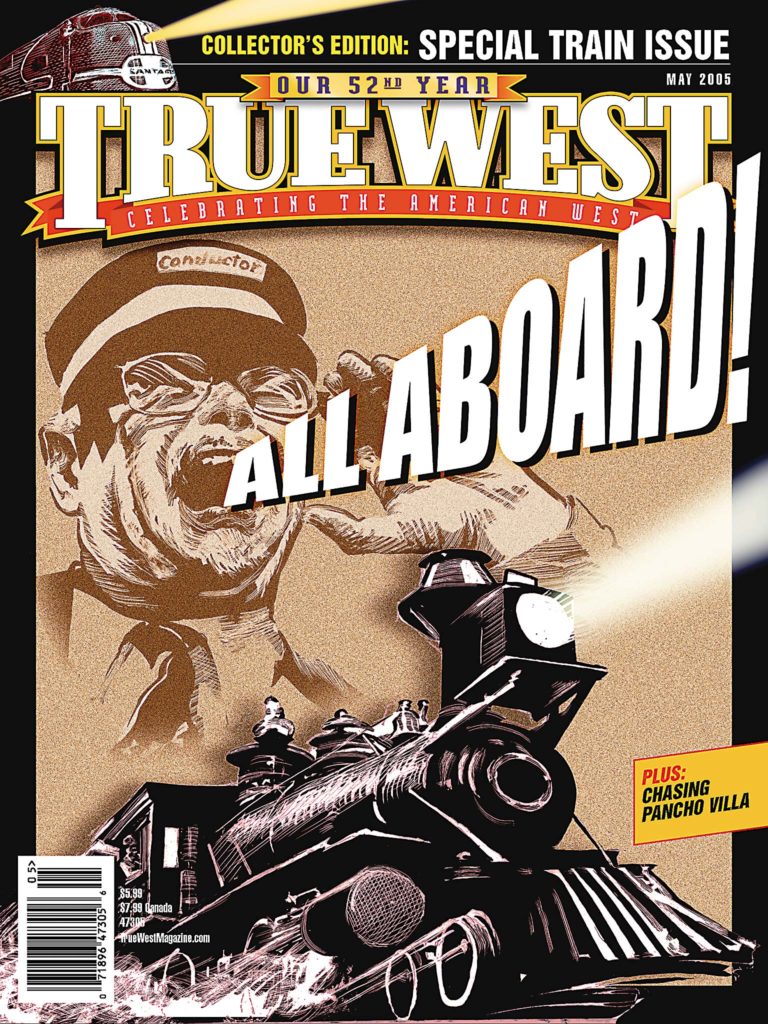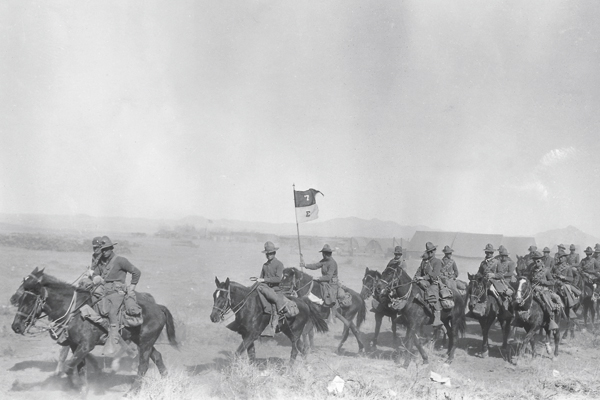 At 4:20 a.m. on March 9, 1916, the United States was invaded for the first time since the British sacked Washington during the War of 1812. The invasion was caused by a grudge and a subsequent desire to avenge an imagined betrayal.
At 4:20 a.m. on March 9, 1916, the United States was invaded for the first time since the British sacked Washington during the War of 1812. The invasion was caused by a grudge and a subsequent desire to avenge an imagined betrayal.
The invader, Pancho Villa, was one of several generals contending for control of Mexico as the long, drawn-out Revolution of 1910 dragged on. The charismatic ex-peon and bandit had metamorphosed into a patriot. He had been fond of Americans, especially after El Paso, Texas, granted him refuge when he escaped from a Mexican prison. For their part, Americans romanticized the bandido-general as a Robin Hood. The poet, Carl Sandburg, even saluted him in verse.
Villa became known as the Lion of the North after a string of victories over Federal troops helped him seize Parral, Colonia Juarez, Chihuahua City and Torreon. By the end of 1914, he was posing for photographers in the president’s chair in Mexico City. But the untutored and brutal ex-bandit would never be named one of the Revolution’s provisional presidents.
Things began to go wrong for Villa in 1915, when Gen. Alvaro Obregon, right-hand man of the Constitutionalist leader Venustiano Carranza, whipped Villa badly at the Battle of Celaya. U.S. President Woodrow Wilson not only abandoned Villa and recognized Carranza as the de facto president of Mexico, but he also allowed Carranza’s troops to move via an American railroad to Agua Prieta, on the Arizona line, where they defeated Villa again.
Villa’s genuine liking for Norteamericanos abruptly turned to hatred, especially for Wilson. To exact revenge for the American president’s “betrayal,” Villa raided the little railroad border town of Columbus, New Mexico, with about 400 of his hand-picked bodyguards, los Dorados—the Golden Ones.
The raiders shot up the sleeping town and burned parts of it. But they met a spirited defense because a 350-man detachment of the U.S. Army’s 13th Cavalry Regiment was stationed there. Unarmed army cooks fought with cleavers and potato mashers used as war clubs. Of course, it was their comrades’ rifle, pistol and machine gun fire that routed the invaders, killing 100 of Villa’s troops and wounding many, while Villa and his marauders killed only 18 American soldiers and civilians.
Punitive Expedition Pursues Villa
A pursuit of the attackers by only 56 cavalrymen had to be abandoned when the men, horses and ammunition became exhausted in the running fight. Although the U.S. was unprepared for war, its reaction to the invasion was marked by speed and determination. In just over a week, Brig. Gen. John J. “Black Jack” Pershing led 4,800 troops in two converging columns across the border into Chihuahua. Pershing was a good choice to head the Punitive Expedition. He was a veteran of the last of the Apache Wars in Arizona and had fought Moro guerrillas in the Philippines.
His force soon grew to 10,000 men: parts of the 16th and 17th Infantry Regiments, the Sixth Field Artillery, one Seventh Mountain Artillery battery and even a squadron of eight airplanes. But the most effective troops were the U.S. Cavalry units, parts of the Fifth, Seventh, 10th, 11th and 13th Regiments. These active pursuers of Villa were backed up on the California to Texas border by thousands of National Guardsmen in defensive positions to prevent further incursions. (And this writer’s father, a first sergeant, helped convert his regulars from San Francisco’s Coast Artillery units into temporary field artillerymen in Calexico.)
Pershing’s effort, lasting 10 months, was arduous campaigning—his men, animals and machines suffered from the desert’s blazing heat by day and the freezing mountain air by night. Chihuahua had not seen rain for nine months when the troops crossed the border, so they were lashed by sandstorms as well as gale-force winds.
The soldiers of the two infantry regiments suffered the most, plodding along on foot behind the more mobile cavalrymen and “eating” a steady diet of the horsemen’s stifling alkali dust, despite the bandannas they pulled over their faces. The bone-dry air cracked their lips and then the skin of their faces and hands. The heat melted grease from the bacon in the men’s packs, causing their rucksacks to run with oil. Soldiers built ramadas of sticks and tent canvas to shade themselves from the burning sun, and some future doughboys of 1917-18 even fashioned pup tents—of adobe.
Water was always scarce, as was forage for the horses, and food was in short supply until Pershing augmented his wagon trains with truck convoys for the first time in American military history. The experimental “motor trucks” worked well, particularly the White and Jeffry “Quads,” four-wheel drive vehicles. To these, Pershing added the army’s first staff cars, and he spent much of his time campaigning in a Dodge touring car (although he also rode several horses). His airplane squadron, however, was a failure. The unarmed Curtiss Jenny biplanes were used for reconnaissance and carrying messages, not combat. They did not have sufficient power for high altitude mountain flights. Those that did not crash broke down. (For example, their wooden propellers cracked in the dry desert heat.) When six of his aircraft were disabled, the general sent the last pair back to Columbus for R&R.
Villa’s Capture Unlikely
Even with highly mobile horse cavalry, autos and trucks, plus Apache and white civilian scouts (mostly American Mormons living in Mexico and Mexican informers), military intelligence was bad. Virtually all reports were as unreliable as the rumors of Villa’s whereabouts. This was hardly surprising since the population of Mexico’s largest state was solidly anti-American. Even the U.S.-backed Carrancistas, who might have been expected to help the Americans against a common enemy, Villa, were hostile. They saw the temporary expedition as an army of occupation. Memories of Gens. Zachary Taylor and Winfield Scott in the Mexican War of 1846-48 were still fresh in Mexican minds.
The Punitive Expedition failed to run Villa to the ground. But Pershing made him a fugitive, and his force was broken up and scattered. Villa was badly wounded, but by Carranza’s men, not Pershing’s. He had to hole up in a Sierra Madre cave with only two loyal lieutenants, which Pershing didn’t learn of until much later. The army covered its khaki backside by insisting that its goal was not the killing or capture of Villa, as the American public believed, but pacification of the border and prevention of further invasions.
Villa’s capture was next to impossible not only because of Chihuahua’s rough desert and mountain terrain and the hostility of its people, but also because Pershing was bound by his own government’s restrictions. Washington ordered him not to use the Mexican railroads. He was not to march through towns, much less occupy them; his forces were ordered to detour around settlements. And his bases had to be Mormon-American agricultural “colonies,” such as Colonia Dublan and Colonia Juarez.
Still, with all of the impediments from Washington as well as Mexico City, the U.S. Army performed pretty well. In addition to fighting off harassing fire from snipers lying in ambush, the troopers engaged in a dozen other bloody skirmishes. But only the last one amounted to a real battle, and it was an embarrassing defeat for Uncle Sam. Usually, U.S. troopers outnumbered the Villistas and hit them with surprise attacks.
In the first action, at Guerrero (March 29, 1916), a unit of the Seventh Cavalry, George Armstrong Custer’s old outfit, routed 380 of Villa’s men at a cost of only five troopers wounded and none killed. Villa lost some 50-60 dead and probably had 35 wounded. At Agua Caliente on April Fool’s Day, black cavalrymen of the 10th Regiment, the Buffalo Soldiers of the Indian Wars, defeated 170 Mexicans, with no losses, but managed to kill only three of the enemy. At Agua Zarca on April 7, the Seventh Cavalry took no losses while killing three guerrillas and wounding two more. At La Joya, April 10, the 11th Cavalry fought its only action of the campaign. It was against just 40 opponents, since Villa’s army was so scattered. One American was killed and three wounded. Seven of Villa’s soldados died and an unknown number were wounded.
A stinging defeat for the U.S. occurred on April 12. Faulty intelligence led two officers and a dozen enlisted men of the 13th Cavalry to venture into the city of Parral, against standing orders. A German woman whipped a crowd of civilians into a hostile mob that was joined by supposedly friendly, or at least “neutral,” Carrancistas along with Villa sympathizers. They chased the Americans from the city. Although only two troopers were killed and six wounded, while the 13th killed about 40 of its enemies, the defeat and retreat of a U.S. cavalry detachment, no matter how small, was embarrassing to Pershing and the army.
After the setback at Parral, a unit of the Seventh Cavalry thrashed a “force” of 10 guerrillas on April 20 on the Verde River. Losses to the U.S. were zero dead or wounded, but the opponents had only three men wounded. This was hardly revenge for Parral. But, just two days later, 145 men of the Seventh Regiment, led by 10 officers, met an equal number of Villa’s men at Tomochic in a real firefight. The cavalry had only two men killed and three wounded against Villista losses of 32 dead and some 50 wounded.
The most interesting of the small victories for Pershing was a dawn surprise raid of May 5, 1916, on a fortified rancho with an unlikely name—Ojos Azules (Blue Eyes). Fourteen officers and 145 enlisted men (including a machine gun platoon) beat 140 Villistas while suffering no casualties. This total contrasted with the enemy losses of 61 killed and about 50 wounded.
There were some running fights during Pershing’s campaign, but usually, the cavalry dismounted and fought on foot, like old-time Dragoons. Ojos Azules was remarkable because it featured the last American cavalry charge during the last horse cavalry campaign by U.S. troops and the first with mechanized units. In addition, it was led by Apache scouts who were supposed to get out of the way of galloping troopers once they located an enemy camp.
On May 14, an already aggressive Lt. George S. Patton, Jr. (of WWII fame) had a little skirmish of his own when he took 10 men of the Sixth Cavalry and five civilian guides to buy corn. At the ranch San Miguel de Rubio, he shot it out with seven Villistas. Patton personally wounded the first man, then killed two more as the first fellow was finished off by one of Patton’s men. The other Mexicans fled.
The skirmish of May 25 at Alamillo Canyon was unusual, for no American officer was present. Twenty Villistas assaulted a party of 10 privates led by a corporal. The attackers killed the noncom and wounded two of the other enlisted men, but the Americans defeated their foes, who suffered a loss of two killed and an unknown number of wounded.
Scapegoat Makes History
The last two actions took place in June 1916. On June 9, 13th Cavalrymen at Santa Clara Canyon killed two of the enemy without any loss. But a week later, the army suffered a humiliating defeat, worse than the Parral rout, when the victors were not Villa’s irregulars but instead Carranza’s government troops.
Reports had 10,000 of Carranza’s Federales gathering at Villa Ahumada when Pershing finally got the message that his supposed “allies” against Villa hated Americans as much as Villa did. He worried that Carranza’s troops meant to cut his supply lines between Columbus and his headquarters in Colonia Dublan, so the general sent C and K Companies, of the black l0th Regiment, to scout Carrizal and Villa Ahumada.
Inexplicably, Pershing did not give them orders to work together, and when he later added a detachment of the 16th Infantry to the mix, its commander, Lt. Martin Crimmins, never learned the purpose of his hurried march to Carrizal. He even was ignorant of orders sending the cavalry ahead of him. Part of the blame for the ensuing debacle must fall on Pershing, although he was absolved of guilt.
The black captain of C Company, Charles Boyd, as ambitious and reckless as Custer, proved to be the perfect scapegoat. Captain Lewis S. Morey’s K Company joined C Company, but the union was poorly coordinated. The supporting infantrymen never arrived. Boyd was senior to Morey and assumed command of both companies. Over the objections of his Mormon guide and Capt. Morey, Boyd determined to ride straight through Carrizal rather than simply bypassing the town to reach Villa Ahumada. Should soldiers in town fire on his rear guard, he vowed to “clean them up.” He even bragged to Morey that he was going to make history. He sure did.
Boyd sent an extraordinarily curt message to the Jefe Politico of Carrizal: “I am passing your town, engaged on a peaceful mission. The usual authority is requested.” Felix Gomez, the general in charge of Carrizal, rode out to reason with Boyd, who cut short the parley by ordering his men forward. Gomez protested: “you may go through the town; but you will have to walk over our dead bodies to do it.” (The general was a good prophet for his body was one of those left on the field at the end of the action.)
Boyd apparently figured that if he were fired upon, Pershing would attack Carrizal from the south and his superior, Gen. Frederick Funston, would attack from the border. Boyd had only 87 men, whom he ordered to dismount and advance on foot. Gomez’s men opened fire. Boyd, hit three times, fell dead. Lieutenant Henry Adair took over, but his men were so short on ammunition that he ordered them to strip cartridge bandoleers from dead or badly wounded men at the moment they were shot.
Next, Capt. Morey was wounded, causing the two companies, never fully unified, to fall apart. Five troops led the runaways, shouting that they were going for help. The pack train was on their heels, followed by most of the other cavalrymen.
Morey and four of his men hid out in an old lime kiln until darkness allowed them to escape. The whole complement either fled for their lives or surrendered.
Some of the runaways ran into Crimmins’ infantry unit and brought it to a halt. The surrendering cavalrymen (17 in some reports, 24 in others) were humiliated by their captors. They were driven into a corral like cattle and stripped of their clothing. Later, when the troopers were marched to Chihuahua City and prison, civilians pelted them with stones.
Carrizal Spells Doom for Expedition
When Pershing heard of the debacle at Carrizal, he sent units to search for survivors, many of whom had lost their horses. On June 22, he received an angry telegram from his superior, Gen. Funston: “Why, in the name of God, did I hear nothing from you? The whole country has known for ten hours, from Mexican sources, that a considerable force from your command was apparently defeated yesterday with heavy losses at Carrizal. Who is responsible for what, on its face, seems to have been a terrible blunder?”
Poor Pershing could answer only that President Carranza’s troops had deliberately initiated an overt act of war.
But neither country wanted war. Pershing was left in place, but negotiations by diplomats took over and Carranza soon returned the prisoners. Even though the 10th Regiment suffered 44 casualties—plus surrendering prisoners—the Mexicans did not follow up on their victory because they had 51 men wounded and 42 men killed, including their commander, Gen. Gomez.
After the disgrace of Carrizal, the Punitive Expedition was really finished, though Pershing was allowed to remain at Colonia Dublan with his entire force, like a chained dog. He was forbidden to operate beyond a line 150 miles below the border.
The soldiers thought they would have to fight only the desert, boredom and tedium now. But Pershing and junior officers like Patton zealously retrained the men and restored their morale for a much bigger fight not far in the future: WWI.
Villa resurfaced but was again defeated by Obregon and finally persuaded by the government to “come in” (1919) to accept the rank of general in the Mexican Army. The deal was sweetened by the gift of a ranch in Durango for Villa. (But, to make sure that he did not take up arms again, someone murdered him in 1923.)
Toughened by Failure
By October 1916, American newspapers were predicting withdrawal from Mexico. But it was not until January 1917 that President Wilson finally called it quits and Pershing began to evacuate Chihuahua. The last trooper crossed the line into New Mexico on February 5, 1917.
On April 6, Wilson declared war on Germany. There was, thankfully, an unforeseen positive “flip side” to the general failure of Pershing’s great expedition. It was a frustrating operation but, as it turned out, not an entirely futile one. No number of maneuvers in Louisiana would have tested and toughened this nucleus of Pershing’s American Expeditionary Force (AEF) for the rigors of the so-called Great War, WWI, in France. This was the case even though his men in 1917-18 had to face the horrors of trench warfare, rather than a war of movement.
The Punitive Expedition was almost a year-long school for the army. It marked the phasing out of horse cavalry and its replacement by mechanized units, including not only trucks and automobiles, but also airplanes. Motorcycles, with sidecars mounting machine guns, were tried, too, but did not hold up well on mountain trails masquerading as roads. Among other equipment, a mediocre French machine gun adopted by the U.S. Army was discarded in favor of the reliable, water-cooled Browning.
And the long desert campaign made an excellent AEF commander of Pershing and prepared future Gens. Courtney Hodges and George S. Patton for WWII.
Richard H. Dillon is a professor of history at the University of San Francisco, Fromm Institute.


